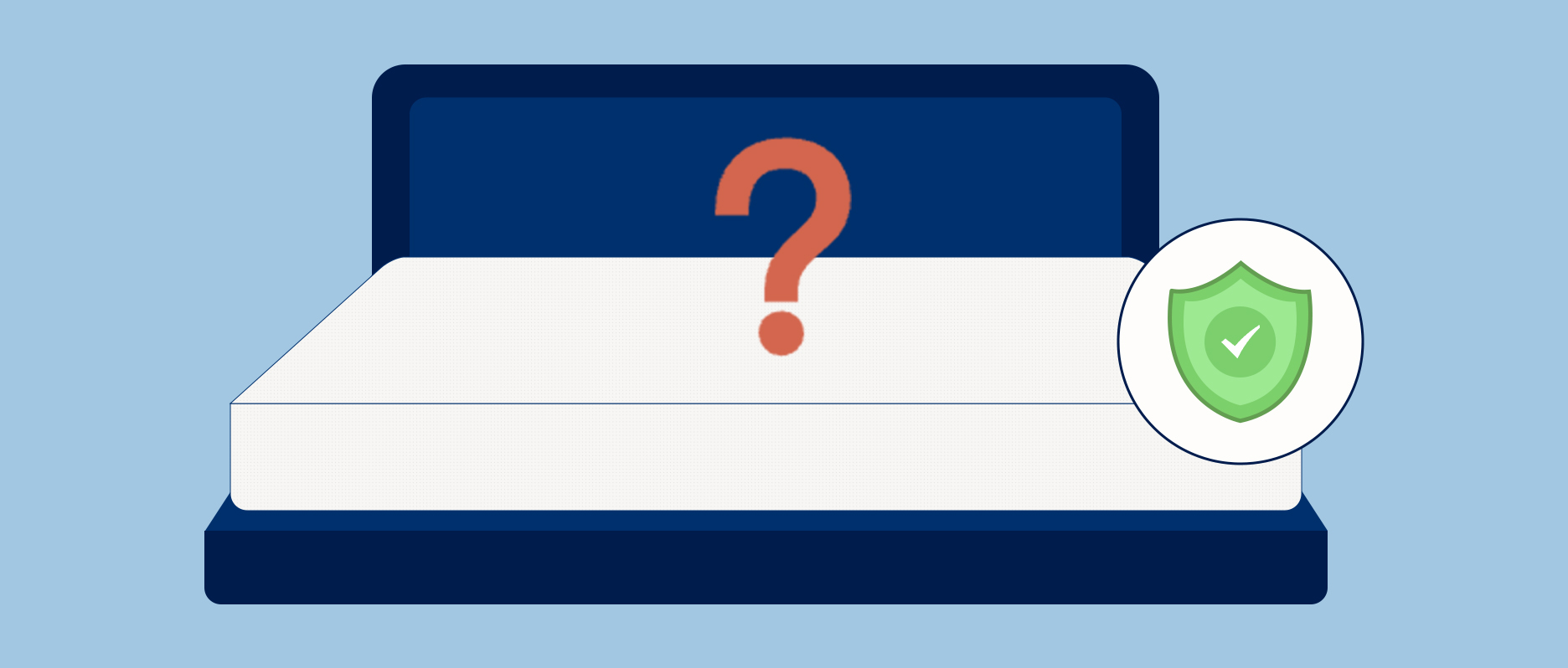Memory foam is a synthetic foam that is commonly used in mattresses. However, there are many misconceptions about its safety due to the fact that it is mainly made from petroleum products. While it is true that some memory foam may contain toxic materials, most modern memory foam is considered to be safe. Moreover, there are several ways to identify and purchase a safe kind of memory foam.
Memory Foam Mattress Components
Memory foam, also called viscoelastic foam or flexible polyurethane foam, is manufactured by whipping the liquid forms of a few different ingredients into a foam and hardening it in a mold through a vulcanization process.
While the scientific names of these components may seem complex and unfamiliar, the encapsulated end-product presents no health hazard.
Foam Ingredients
Virtually all modern memory foam contains the following ingredients:
Blowing Agents
Compounds that generate small air pockets for ventilation. Modern mattresses utilize water or compressed gases and avoid ozone-depleting chemicals banned by regulations.
Diisocyanates
The reactive agents induce the foaming process and lend the foam structural stability. Though the isolated chemicals require careful handling during manufacturing, they chemically transform in the finished product into inert, non-toxic polymers.
Polyols
Polyols are compounds derived from petroleum or plant oils that affect foam viscosity and functionality. There is no significant exposure risk in the final product.
Flame Retardants
Due to the flammability of raw memory foam, mattresses require flame-retardant components to meet strict fire safety standards. While some older products contained hazardous materials like fiberglass, most modern mattresses utilize safer Alternatives such as:
Cotton
Plant-based fibers treated with fire-resistant brominated or phosphorous compounds. Provides a natural flame barrier.
Silica
Fine silica threads with high heat resistance. Non-irritating synthetic option without health risks.
Viscose
Semisynthetic viscose material derived from tree pulp. Effective protection against ignition.
Wool
Wool is one of the best mattress fire suppressants available. It is naturally resistant to combustion and increases the breathability and comfort of the mattress to boot!
Ideally, memory foam mattress shoppers should consult the legally mandated labeling which discloses all included fire retardant items and avoids products listing fiberglass. Where budget constraints exist, be aware cheaper mattresses may contain outdated or potentially irritating suppressants to cut costs.
Toxic Chemicals to Avoid in Memory Foam Mattresses

While strict regulations prohibit the use of toxic chemicals in memory foam for consumer mattresses, lower quality imported products or those made with outdated techniques may still contain concerning compounds, including:
- Industrial solvents like acetone and dimethylformamide, which can prompt respiratory and dermal irritation.
- Adhesives containing formaldehyde, a known carcinogen that can induce short-term reactions.
- Metal compounds such as phenol or toluene may leach from inferior-quality foams.
Chemical Restrictions
It is crucial to understand that although certain chemicals may be utilized during the manufacturing process, United States regulations prohibit the presence of hazardous substances in the final product. Before being placed inside a mattress, these chemicals must be thoroughly washed away from the foam.
Furthermore, expert organizations like CertiPUR-US track and mandate a “Restricted Substances List” of over 10,000 worrisome chemicals that should never appear in certified memory foam components. Thus, when shopping for mattresses, always verify the presence of safety labels to avoid potential exposures.
Is Memory Foam Toxic?
When produced by reputable brands adhering to modern safety protocols, memory foam presents no toxicity risk to consumers. US government regulations prohibit toxic chemicals in mattresses made domestically.
Additionally, the residual trace chemicals generated as byproducts during manufacturing are thoroughly washed and neutralized before the mattresses leave factories.
However, the lower-tier imported mattress may lack oversight on chemical safety practices. Budget products made using outdated or substandard methods could potentially retain mild irritants without proper purging.
Seeking accredited certifications like CertiPUR and OEKO-TEX ensures that any memory foam mattress you choose meets the highest purity standards, regardless of its origin.
Off-Gassing
When memory foam mattresses are produced, the heat-induced chemical reactions can cause a release of gaseous byproducts, which can continue to be emitted after the mattress is unboxed. This process is known as off-gassing. These transient releases consist primarily of volatile organic compounds (VOCs) that dissipate rapidly when exposed to air.
While VOC residues can generate unpleasant odors and temporary symptoms like mild headaches or nausea for sensitive individuals, complete diffusion typically occurs over 7-14 days. Some consumers expedite the off-gassing timeline by unboxing their mattress in a well-ventilated space days prior to bed installation.
How to Ensure Your Memory Foam Mattress is Safe
Fortunately, a few simple purchasing criteria can help ensure your new memory foam mattress meets high safety and purity standards:
- Verify certifications like CertiPUR-US and OEKO-TEX – accredited labels mean foams and textiles pass rigorous testing and are free from hazardous chemicals.
- Check product descriptions and labels for specifics on flame retardants used, avoiding concerning terms like “fiberglass.”
- Favor mid-range or premium models from reputable manufacturers over ultra-budget imported lines more prone to cut corners on safety protocols.
While cost and quality often correlate, many top mattress companies now integrate certified foams into competitively priced models. Do your research to understand what substances are in a given mattress, review company credentials, and scan for certifications to enjoy peace of mind that safety is prioritized regardless of your budget.
Featured Memory Foam Mattress: MLILY Harmony+
As a prime example of exceptional quality, our top pick – the MLILY Harmony+ – combines certified ultra-premium memory foams with an advanced cooling gel matrix to achieve superior comfort and safety assurances.
MLILY’s proprietary AeroFusionTM technology infuses temperature-regulating phase change materials into an open-cell memory foam support core. Cross-ventilation channels actively dissipate body heat while maximizing surface breathability to maintain your ideal sleeping climate.
Moreover, MLILY’s memory foam products hold certified labels: CertiPUR-US and OEKO-TEX Standard 100. These validate that the mattresses are made without ozone depleters, heavy metals, formaldehyde, and other substances of concern, according to independent lab testing. You can confidently enjoy the Harmony+’s state-of-the-art foam innovation, knowing it is optimized for purity and performance.
Bottom Line: Choosing a Safe Mattress
Fortunately, modern memory foam mattresses are safe. The mattress industry is heavily regulated, and many mattress manufacturers go above and beyond the legal regulatory standards to get safety and purity certifications that give consumers peace of mind.
As one such trusted manufacturer deeply committed to customer health, we ensure all our memory foam mattresses are fully certified by CertiPUR-US, meeting the gold standard for safety benchmarks free from hazardous substances.



